Shortcuts
Is electric heating with infrared heating foils safe?
Infrared radiation, also known as infrared, has a wavelength between 780 nanometers and 1 millimeter. It is a type of radiation emitted by all objects with a temperature higher than absolute zero. The natural sources of infrared emissions are various objects, from people and objects to the Sun. Using infrared to heat your home is therefore a safe practice that does not have a negative impact on human health.
Installing infrared heating foil in rooms causes the temperature felt by residents to be on average 2-3°C higher than in the case of traditional heating. This, in turn, translates into increased user comfort and energy savings because there is no need to raise the temperature in the room. Moreover, the user does not feel the movement of air, which distinguishes this system from convection heating and eliminates dust rising as a result of the operation of the heating system. This is especially important for allergy sufferers and people sensitive to pollen and dust.
The emitted infrared waves also contribute to drying the walls, which in turn improves the insulating properties of the walls. A dry wall insulates much better than a wet one, which leads to a reduction in the demand for thermal energy and, consequently, lower costs of heating a house or apartment.
How does an underfloor heating system work?
The system consists of several elements. The most important are heating cables and foils or mats, which are powered by electricity. All elements are installed under the floor. In addition, underfloor heating has a special layer of insulation that prevents moisture from entering and maintains the proper temperature. It is placed on a footing, concrete floor or concrete screed. It is a flexible heating system that can be adjusted to your space needs, so it is worth consulting a specialist first to choose the most suitable underfloor heating installation.
When it comes to the underfloor heating installation system, the heating foil is not visible in any way. The only element that can be seen in underfloor heating are temperature controllers. They display all important information. Our underfloor heating system uses modern thermostats . With their help, you can control the air and floor temperature in real time. In addition, underfloor heating is controlled manually or via a dedicated application for smartphones and tablets. In other words, you change the temperature and heat level remotely!
Heating cables are the cheapest way to install an underfloor heating system. They are from 3 to 7 mm thick and are made of material with appropriate electrical resistance. Installation of underfloor heating cables requires connecting them to a tape or mesh and pouring them with screed. There are no guidelines regarding the number and density of wires, only the minimum distance between them (approx. 5 cm, the exact value is provided by the manufacturer depending on the model). Electric underfloor heating system
therefore, it must be taken into account already at the house design stage.
Another good installation solution are heating mats , which we also offer. When it comes to electric heating, the panels do not have to be dismantled - the mat is installed in a direct system. Using heating mats is a very simple way to additionally insulate rooms. You can choose a heating mat as underfloor heating at any time. This is most often done during renovation. This underfloor heating installation will be perfect for an apartment. However, compared to standard self-installed heating cables, the mats are more expensive. Their price is compensated by their very simple installation and the possibility of using them even in older buildings. The difference in temperature and heat of the entire surface before and after the installation of the heating system is strongly felt, thanks to strong thermal insulation.
What are the benefits of electric underfloor heating?
The obvious advantage of the system is ensuring the highest possible thermal comfort in a very short time. However, this is only one noteworthy advantage. Few people remember that the electric floor heating we provide allows you to reduce the average air temperature without reducing thermal comfort. How is this possible? Well, electric underfloor heating is a complement to the standard method of heating rooms. When the product is working, fuel consumption in the main installation can be reduced. According to estimates, this way you can save up to 20% of the energy required to maintain thermal comfort. This solution translates into real savings in the home budget.
Underfloor heating under panels gives even more. The temperature distribution in rooms varies greatly. By filling the floor surface with ducts, you can ensure the most effective heat distribution - ensure temperature regulation in the rooms. This also applies to surfaces near external walls, where the temperature is usually lower because heat escapes faster. In such places, the flexible arrangement of pipes has a positive effect on the heat generated.
Moreover, this solution is recommended for allergy sufferers. Underfloor heating in a room does not produce a temperature higher than that reached by the human body. As a result, there is no air circulation in selected rooms, which could spread dust and mites. In addition, electric underfloor heating - thanks to the heating foil - creates anions that filter the air.
Cost of underfloor heating foil and system operation
The cost of underfloor heating will vary slightly in each home. Much depends on factors such as the energy efficiency of the building, the façade insulation used, window joinery and regional electricity prices. It is worth emphasizing, however, that electric underfloor heating is not as expensive a solution as some people think. Electricity bills are increasing, but this is still a saving - the fuel used to heat homes usually costs much more than electricity. Moreover, electric floor heating is only used for a few months - in the worst case, for half of the year. There is no need to use the system outside the season, which does not generate additional costs.
If you are interested in electric underfloor heating, please contact us by phone or e-mail. Our representatives will answer every question and present the most important advantages of the presented system. We can also help you choose standard or storage electric underfloor heating.
Water or electric heating?
When it comes to electric underfloor heating, installation costs are usually lower than in the case of water installation. This is due to the need to have a gas, oil or solid fuel furnace, heating with a heat pump, and a boiler room specially adapted for this purpose, which additionally requires the construction of a ventilation system, which generates additional costs. Underfloor heating under panels operating on electricity does not require additional installations, e.g. a heat pump, because it is connected to the existing electrical network. Moreover, in a water installation, you need to spend a little more time to properly plan the pipe arrangement. A pressure test of the water underfloor heating system should also be carried out in two stages (to check for leaks).
Where should you not use underfloor heating?
Underfloor heating allows you to give up traditional radiators (often spoiling the aesthetics of rooms and making them difficult to furnish). In houses insulated with this method, the floor becomes a source of energy, from a large surface of which heat penetrates into the air, raising its temperature and providing thermal comfort. However, heating under panels or floors does not make much sense where the heated air has nowhere to go. This applies primarily to permanent kitchen or bathroom structures under which no underfloor heating is installed. It is also recommended that electric underfloor heating is not placed where the floor is to be covered with carpets or rugs. Therefore, many investors refrain from installing flooring in the living room or bedrooms - where the floor area is relatively small and where users often decide to rearrange the furniture or decorative floor coverings. Electric underfloor heating does not have to be installed in storerooms, laundries or utility rooms where there is no need to maintain a comfortable temperature because people rarely stay there. In large rooms, it is easier to plan the installation over the entire surface or part of it, because there is more room for maneuver between places where underfloor heating should not be placed.
Which type of heating should you choose for the bathroom?
Underfloor heating is a very often used solution in bathrooms - where a constant, high room temperature is expected, which is favorable for bathing. It works particularly well in small bathrooms, where a radiator on the wall makes it difficult to place furniture and sanitary appliances. When it comes to electric underfloor heating, opinions are among the most favorable. However, please remember that special insulation is necessary to prevent moisture from penetrating under the floor and possible damage to the entire system. In this way, the underfloor heating installation is protected and resistant to damage.
Many investors choose water heating for the bathroom, while radiators dominate the rest of the house. However, the floor does not heat (usually) from spring to autumn. Heating the floor independently of a heating boiler, i.e. electric heating, is a good choice when you want to achieve the effect of leaving the bathtub or shower directly on warm tiles, even in spring or summer. This is also a very good solution when small children live at home and want to ensure maximum thermal comfort while bathing. In the case of a bathroom , an insulating mat for underfloor heating is useful, ensuring protection against moisture and proper thermal conductivity.
What flooring should be used for underfloor heating?
Virtually any type of floor is suitable for underfloor heating, both ceramic tiles and panels. Electric underfloor heating under the panels will ensure proper insulation of the room and may be a great idea in selected spaces such as a bedroom or living room. However, you must choose a panel model whose manufacturer declares good thermal conductivity and use this parameter when choosing a specific product. Another issue is the flooring used under the floor. As a rule, underfloor heating is embedded in tile adhesive or self-leveling screed (the layer thickness depends on its type). When it comes to electric underfloor heating, the cost of the entire investment is lower because the heating mat is mounted directly under the panels or tiles - just remove the outer layer of the floor. Its location does not significantly increase the level of the room, so you can use electric heating under panels and tiles without carrying out a general, comprehensive renovation.
Is it necessary to use an insulating mat?
The insulating mat in an underfloor heating system is a thin layer placed under the heating element. Its use is primarily to reduce possible heat loss. Additionally, it muffles the sounds of footsteps and ground sounds. Therefore, it is perfect if you plan to have underfloor heating in the bedroom or living room. Installation under the panels will make it easier to walk barefoot in the rooms - which is preferred by many people.
As for the costs of using underfloor heating, they can be reduced by using an insulating mat, which is why it is recommended to lay it - especially since it does not raise the floor level much. Its use prevents heat loss, providing thermal insulation.
How to minimize the costs of electric underfloor heating?
Underfloor heating is a very convenient solution that allows you to use an exposed, large surface as a heat source, leaving the walls free, without radiators making furniture difficult. A warm floor also means comfort for your feet and eliminates the need to use thick carpets and rugs. Electric underfloor heating is becoming more and more popular, especially in the era of widespread use of renewable energy sources. This is the basic way to reduce the cost of this form of home heating. The investment is made once - in photovoltaic panels used to produce energy and in electric underfloor heating. Depending on the size of the investment, its costs should be returned after a few or a dozen or so years. From now on, you can use electricity heating completely free of charge.
The second way to save will be to use storage underfloor heating in your home, which consumes electricity only when it is cheaper. It is also worth implementing healthy habits that support the proper use of media, such as less frequent but intensive ventilation in winter with the heating turned off (minimizing frequent heat loss), as well as avoiding temperature fluctuations, in which a thermostat can be useful. A constant, comfortable temperature for household members not only saves money, but above all has a positive effect on health, comfort and thermal comfort. When used properly, the costs of underfloor heating are comparable to other forms of home heating.
If you are wondering whether to choose underfloor heating for your new house or apartment, our advisors will be happy to suggest the best solutions! Contact us.
Heating films
How to choose a heating foil?
The choice of heating foil, contrary to what most of us think, does not depend solely on our requirements. Initially, the heating power of each room in which the installation is to be performed should be determined. If such data is not included in the project, estimates should be made based on the project, the purpose of the premises and individual needs.
The difference between heating foil and heating mat
Unlike classic heating cables or mats, the heating foil heats the entire surface and not only locally through the high-temperature cable, so it can be installed under any surface. The heating foil consumes 50% less electricity than a traditional heating mat.
Can I install the foil under furniture?
Heating foils can only be installed under furniture with legs of min. 3 cm. It is prohibited to install it under permanent elements, e.g. under kitchen furniture or wall units.
Is heating foil harmful?
The heating foil is a safe product and has been tested by research units accredited by the European Commission.
Will heating foil alone heat my house?
Heating foil is a self-contained system that provides warmth when used as the sole heat source.
What is the energy consumption of heating foils?
Electricity consumption depends solely on the building's insulation. Based on the data contained in the "Energy Efficiency" document, we can determine the actual operating costs.
Can different powers of heating foils be combined?
It is forbidden to combine heating foils of different power.
Can different widths be combined?
Yes. You can freely combine different foil widths with the same rated power (xx/m2).
What is the warranty for the heating foil?
The warranty for Termofol heating foils installed by an Authorized Installer is 15 years, and in the case of self-assembly - 6 years.
What is the service life of Termofol heating foil?
The product lifespan is set at 100 years.
How to choose the power of heating foil for my home?
The selection of heating foil should be based on design data. If you want to choose the product yourself, in the case of well-insulated new buildings, a 80 W/m² foil will be suitable, for medium insulation - a 140 W/m² foil, and for poorly insulated buildings - a 220 W/m² foil.
How to prepare the substrate for heating foil?
The substrate should be dry and even. The insulation on which the heating foil will be mounted should be placed on a layer of concrete.
How to finish the floor?
The type of heating system depends on the material that will be used to finish the floor. In the case of a direct system, it is possible to finish the floor with floor panels adapted to underfloor heating. If you want to use glued floors, you need to choose a storage system and finish the floor after the primer dries.
What do I gain from installation by an Authorized Installer?
Installation by an Authorized Installer is a guarantee of a properly constructed system and a longer manufacturer's warranty - 15 years. An authorized installer undergoes annual training and is able to properly select and install our products.
What's the time of realisation?
Orders are processed within 48 hours from the date of submission. You will be informed about the status of your order by our logistics department by e-mail and SMS.
What is infrared heating foil?
Infrared heating foil is a high-quality product that will work in almost every case. It is ideal for surface heating, with particular emphasis on underfloor, ceiling and wall heating. It is safe to say that the quality of workmanship combined with wide functionality makes it irreplaceable in its field.
What is the heating foil made of?
The heating foil works on the principle of the electrical resistance of carbon. Infrared heating foil consists of carefully selected carbon and aluminum paste applied to PET foil using the latest technology (printing technique). This material has excellent insulating and fire-resistant properties. The PET foil was secured with a special LAMINEX foil. The copper tape electrode acts as a conductor, and the silver tape provides protection against sparking.
How does infrared heating foil work?
Heat is generated using electrical resistance on special graphite heating strips. The heating power depends on the distance between the mentioned strips, the width and the amount of graphite used. Heating foils with relatively low power are ideal for alternative heating (the comfort of a warm floor), and with higher power as a basic heating system.
Which heating foil should I choose?
Our offer includes many different models of heating foils, which differ mainly in power - from 80 W/m² to 400 W/m².
Solutions with lower power, although they perfectly cover the demand for thermal power, are characterized by a relatively long time delay (longer waiting time to obtain the set parameters).
We personally recommend heating foils with higher power (from 140 W/m²), where the time delay is small, which translates into maximum thermal comfort in the room.
NOTE: Regardless of the heating power, the energy demand is the same. The difference is only in the heating time, but the electricity consumption is the same! Underfloor heating with higher power foil reaches the set temperature faster, and with lower power it takes more time to bring the surface layer to the appropriate temperature.
The rate of temperature rise also depends on the amount of coverage of the heating surface - the greater the percentage of floor coverage, the shorter the waiting time to reach the set temperature. The comfort of using the heating foil in a surface heating system largely depends on the electronic temperature controller. Our offer includes both standard models - with a temperature setting function and a simple security system, as well as technologically advanced models - with a touch display, a wide personalization mode and remote control systems. In the case of complex products, users can choose the most effective control system, perfectly suited to their needs.
NOTE: Before purchasing a heating foil, ask about European tests and check the protection of the heating foil!
Solutions with lower power, although they perfectly cover the demand for thermal power, are characterized by a relatively long time delay (longer waiting time to obtain the set parameters).
What are the most common mistakes when choosing a heating foil?
The selection and installation of foil in surface heating systems is simple and almost non-invasive. However, there are several key issues that need to be addressed, both at the design and installation stages. The basic mistake that can be made when designing an installation with heating foil is using a model with too low specific power. This may be due to incorrectly estimated heating power demand. Apart from the obvious underheating of the rooms, the time it takes for the temperature to reach the desired level (or close to it) will be longer than in a properly sized installation.
Which thermoregulator for heating foil?
Wall heating guarantees even temperature distribution over the entire height of the room. It is characterized by a lack of air circulation due to the transfer of heat to the room through radiation. Wall finishing elements include plasterboards with and without finishing, laminated boards, and wall panels.
Ceiling heating is installed where underfloor or wall heating is not possible due to lack of free space, e.g. a large number of floor fittings, thick carpeting or wall fittings.
Can the heating foil be used as wall heating?
Wall heating guarantees even temperature distribution over the entire height of the room. It is characterized by a lack of air circulation due to the transfer of heat to the room through radiation. Wall finishing elements include plasterboards with and without finishing, laminated boards, and wall panels.
Ceiling heating is installed where underfloor or wall heating is not possible due to lack of free space, e.g. a large number of floor fittings, thick carpeting or wall fittings.
Can foil serve as a traditional radiator?
Our offer includes a heating foil with a power of 400 W/m2, from which you can create your own radiator. By installing the heating foil under plasterboard or natural stone, we will obtain a heater with low electricity consumption, high efficiency, and thanks to the use of a thermoregulator, we will have full control over the operating temperature, and our heater will consume approximately 30% less electricity in relation to power.
Can heating foil heat mirrors?
Using a heating foil under the mirror ensures that the mirror does not fog up and, in addition, turns into a radiator.
How to heat a summer house?
more in this article Foil powered by direct current is ideal for heating caravans, summer houses, summer houses where we do not have access to the electricity network. This system can be connected to a battery or directly to photovoltaic panels.
Does the heating foil protect against heat loss through the balcony window?
Balcony and display windows are the areas that generate the greatest heat losses. By installing a strip of heating foil under the floor in this place, we build a barrier curtain that will limit the flow of cold air. This function serves as an underfloor heater.
Heating Mats
Does the power of 150 W/m2 result in higher operating costs?
The higher the rated power, the shorter the time to reach the set floor temperature.
Is it possible to cut or shorten the mat?
The heating mat must not be shortened (cutting the heating cable is prohibited). The heating cable is attached to a grid that can be cut, thanks to which we can adjust the mat to the dimensions of the room.
Can heating cables overlap?
It is forbidden to overlap or cross the heating mat. In any case, the distance between the cables must be at least 8 cm.
Can the mat be installed under a bathtub/shower tray?
It is prohibited to install heating mats under bathtub/shower trays.
Can the mat be installed only by a specialist?
No, special care must be taken during installation to avoid damaging the heating cable.
Does the mat need to be connected by an electrician?
The heating mat must be connected by an electrician with valid qualifications.
Can I install a heating mat under a fixed element?
No, heating mats cannot be installed under fixed fittings or under furniture without legs. The furniture must have legs that are at least 3 cm high.
Can I install a heating mat under floor panels?
No, only heating foils are installed under the panels.
What glue should I use to install ceramics?
Flexible underfloor heating adhesive is required to attach ceramics.
What joints should be used for ceramics?
Use a flexible joint for grouting.
How to check the correct operation of the heating mat after installation?
Measure the resistance of the heating cable and the insulation resistance.
What to do if the heating mat is damaged during installation?
The electrician who installed the heating must check the cause of the malfunction. It may be a thermostat failure, damaged power cables or damage to the heating mat.
Frequently asked questions to read
Is electric heating with infrared heating foils safe?
Infrared radiation, also known as infrared, has a wavelength between 780 nanometers and 1 millimeter. It is a type of radiation emitted by all objects with a temperature higher than absolute zero. The natural sources of infrared emissions are various objects, from people and objects to the Sun. Using infrared to heat your home is therefore a safe practice that does not have a negative impact on human health.
Installing infrared heating foil in rooms causes the temperature felt by residents to be on average 2-3°C higher than in the case of traditional heating. This, in turn, translates into increased user comfort and energy savings because there is no need to raise the temperature in the room. Moreover, the user does not feel the movement of air, which distinguishes this system from convection heating and eliminates dust rising as a result of the operation of the heating system. This is especially important for allergy sufferers and people sensitive to pollen and dust.
The emitted infrared waves also contribute to drying the walls, which in turn improves the insulating properties of the walls. A dry wall insulates much better than a wet one, which leads to a reduction in the demand for thermal energy and, consequently, lower costs of heating a house or apartment.
How does an underfloor heating system work?
The system consists of several elements. The most important are heating cables and foils or mats, which are powered by electricity. All elements are installed under the floor. Apart from that floor heating it has a special layer of insulation that prevents moisture from getting inside and maintains the proper temperature. It is placed on a footing, concrete floor or concrete screed. It is a flexible heating system that can be adjusted to your space needs, so it is worth consulting a specialist first to choose the most suitable underfloor heating installation.

When it comes to the underfloor heating installation system, the heating foil is not visible in any way. The only element that can be seen in underfloor heating are temperature controllers. They display all important information. Our system underfloor heating uses modern thermostats . With their help, you can control the air and floor temperature in real time. In addition, underfloor heating is controlled manually or via a dedicated application for smartphones and tablets. In other words, you change the temperature and heat level remotely!
Heating cables are the cheapest way to install an underfloor heating system. They are from 3 to 7 mm thick and are made of material with appropriate electrical resistance. Installation of underfloor heating cables requires connecting them to a tape or mesh and pouring them with screed. There are no guidelines regarding the number and density of wires, only the minimum distance between them (approx. 5 cm, the exact value is provided by the manufacturer depending on the model). Electric underfloor heating system
therefore, it must be taken into account already at the house design stage.
Another good installation solution are heating mats , which we also offer. When it comes to electric heating, the panels do not have to be dismantled - the mat is installed in a direct system. Using heating mats is a very simple way to additionally insulate rooms. You can choose a heating mat as underfloor heating at any time. This is most often done during renovation. This installation underfloor heating will work great in an apartment. However, compared to standard self-installed heating cables, the mats are more expensive. Their price is compensated by their very simple installation and the possibility of using them even in older buildings. The difference in temperature and heat of the entire surface before and after the installation of the heating system is strongly felt, thanks to strong thermal insulation.
What are the benefits of electric underfloor heating?
The obvious advantage of the system is ensuring the highest possible thermal comfort in a very short time. However, this is only one noteworthy advantage. Few people remember that the electric floor heating we provide allows you to reduce the average air temperature without reducing thermal comfort. How is this possible? Well, electric underfloor heating is a complement to the standard method of heating rooms. When the product is working, fuel consumption in the main installation can be reduced. According to estimates, this way you can save up to 20% of the energy required to maintain thermal comfort. This solution translates into real savings in the home budget.
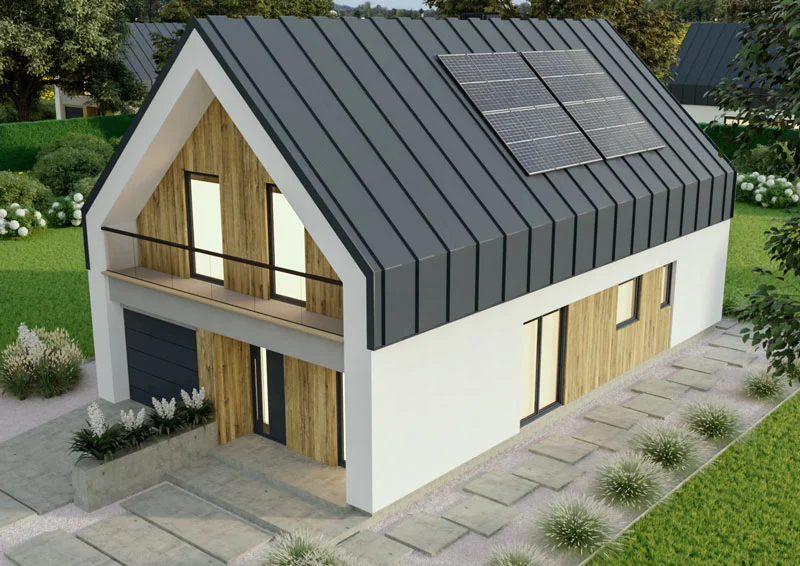
Underfloor heating under panels gives even more. The temperature distribution in rooms varies greatly. By filling the floor surface with ducts, you can ensure the most effective heat distribution - ensure temperature regulation in the rooms. This also applies to surfaces near external walls, where the temperature is usually lower because heat escapes faster. In such places, the flexible arrangement of pipes has a positive effect on the heat generated.
Moreover, this solution is recommended for allergy sufferers. Underfloor heating in a room does not produce a temperature higher than that reached by the human body. As a result, there is no air circulation in selected rooms, which could spread dust and mites. In addition, electric underfloor heating - thanks to the heating foil - creates anions that filter the air.
Cost of underfloor heating foil and system operation
In every house the cost of underfloor heating will vary slightly. Much depends on factors such as the energy efficiency of the building, the façade insulation used, window joinery and regional electricity prices. It is worth emphasizing, however, that electric underfloor heating is not as expensive a solution as some people think. Electricity bills are increasing, but this is still a saving - the fuel used to heat homes usually costs much more than electricity. Moreover, electric floor heating is only used for a few months - in the worst case, for half of the year. There is no need to use the system outside the season, which does not generate additional costs.
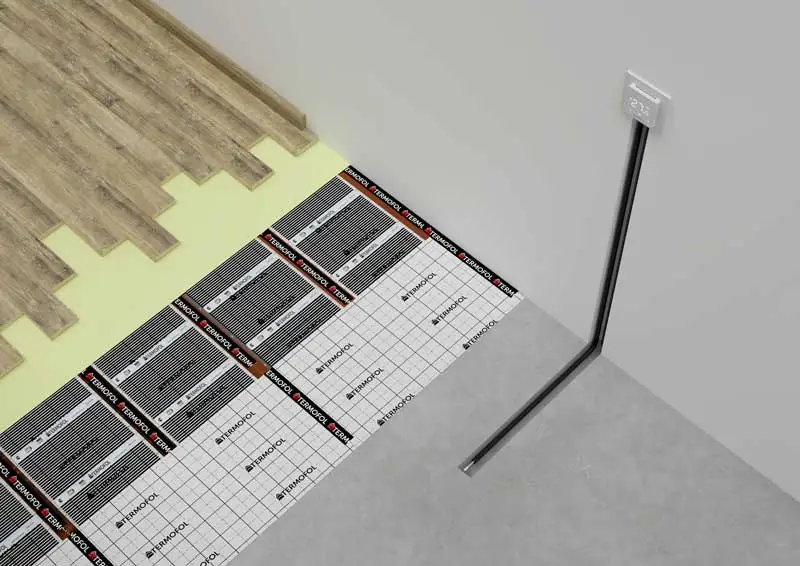
We invite everyone interested in electric underfloor heating to visit us contact by telephone or e-mail. Our representatives will answer every question and present the most important advantages of the presented system. We can also help you choose standard or storage electric underfloor heating.
Water or electric heating?
When it comes to electric underfloor heating, installation costs are usually lower than in the case of water installation. This is due to the need to have a gas, oil or solid fuel furnace, heating with a heat pump, and a boiler room specially adapted for this purpose, which additionally requires the construction of a ventilation system, which generates additional costs. Underfloor heating under panels operating on electricity does not require additional installations, e.g. a heat pump, because it is connected to the existing electrical network. Moreover, in a water installation, you need to spend a little more time to properly plan the pipe arrangement. A pressure test of the water underfloor heating system should also be carried out in two stages (to check for leaks).

Where should you not use underfloor heating?
Floor heating allows you to give up traditional radiators (often spoiling the aesthetics of rooms and making them difficult to furnish). In houses insulated with this method, the floor becomes a source of energy, from a large surface of which heat penetrates into the air, raising its temperature and providing thermal comfort. However, heating under panels or floors does not make much sense where the heated air has nowhere to go. This applies primarily to permanent kitchen or bathroom structures under which no underfloor heating is installed. It is also recommended that electric underfloor heating is not placed where the floor is to be covered with carpets or rugs. Therefore, many investors refrain from installing flooring in the living room or bedrooms - where the floor area is relatively small and where users often decide to rearrange the furniture or decorative floor coverings. Electric underfloor heating does not have to be installed in storerooms, laundries or utility rooms where there is no need to maintain a comfortable temperature because people rarely stay there. In large rooms, it is easier to plan the installation over the entire surface or part of it, because there is more room for maneuver between places where underfloor heating should not be placed.
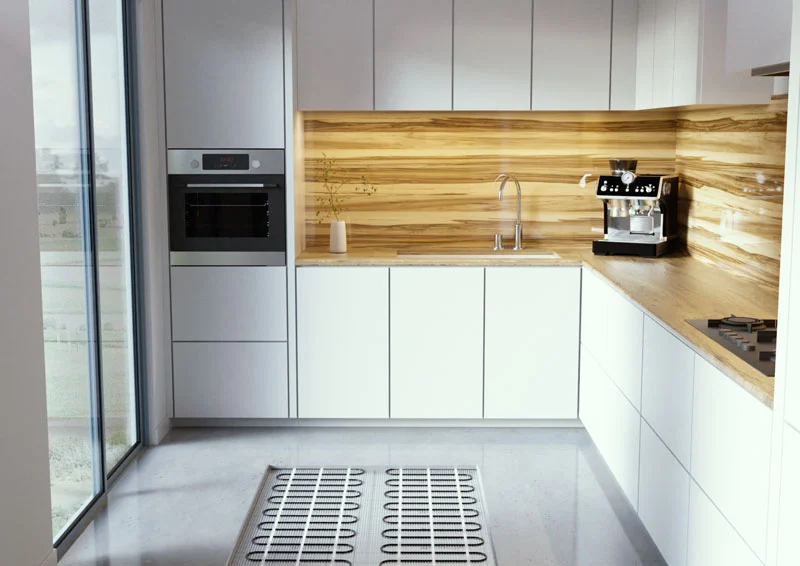
Which type of heating should you choose for the bathroom?
Underfloor heating is a very often used solution in bathrooms - where a constant, high room temperature is expected, which is favorable for bathing. It works particularly well in small bathrooms, where a radiator on the wall makes it difficult to place furniture and sanitary appliances. As for opinions electric underfloor heating are among the most beneficial. However, please remember that special insulation is necessary to prevent moisture from penetrating under the floor and possible damage to the entire system. In this way, the underfloor heating installation is protected and resistant to damage.
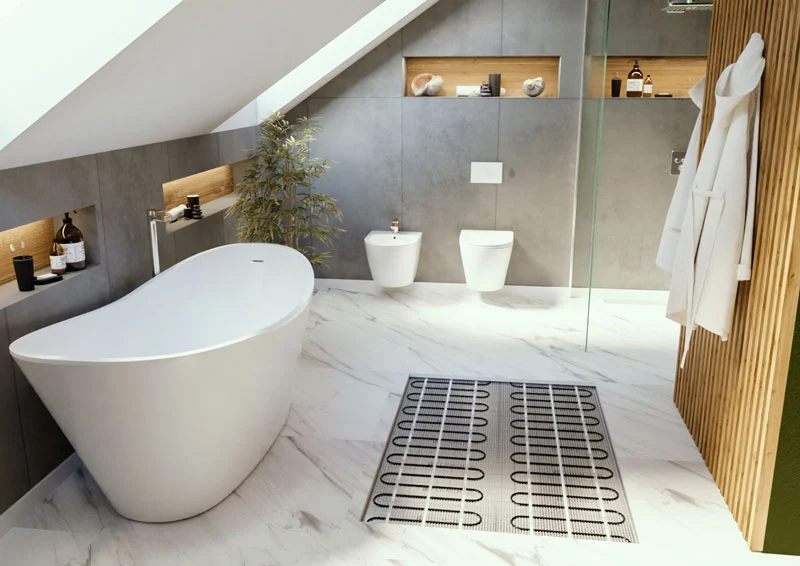
Many investors choose water heating for the bathroom, while radiators dominate the rest of the house. However, the floor does not heat (usually) from spring to autumn. Heating the floor independently of a heating boiler, i.e. electric heating, is a good choice when you want to achieve the effect of leaving the bathtub or shower directly on warm tiles, even in spring or summer. This is also a very good solution when small children live at home and want to ensure maximum thermal comfort while bathing. In the case of a bathroom , an insulating mat underneath is useful floor heating ensuring protection against moisture and proper thermal conductivity.
What flooring should be used for underfloor heating?
Virtually any type of floor is suitable for underfloor heating, both ceramic tiles and panels. Electric underfloor heating under the panels will ensure proper insulation of the room and may be a great idea in selected spaces such as a bedroom or living room. However, you must choose a panel model whose manufacturer declares good thermal conductivity and use this parameter when choosing a specific product. Another issue is the flooring used under the floor. As a rule, underfloor heating is embedded in tile adhesive or self-leveling screed (the layer thickness depends on its type). When it comes to electric underfloor heating, the cost of the entire investment is lower because the heating mat is mounted directly under the panels or tiles - just remove the outer layer of the floor. Its location does not significantly increase the level of the room, so you can use electric heating under panels and tiles without carrying out a general, comprehensive renovation.
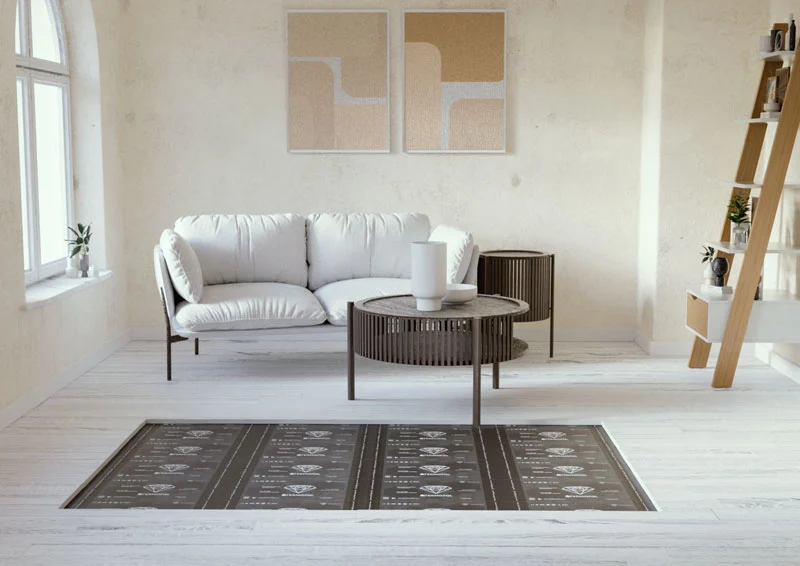
Is it necessary to use an insulating mat?
The insulating mat in an underfloor heating system is a thin layer placed under the heating element. Its use is primarily to reduce possible heat loss. Additionally, it muffles the sounds of footsteps and ground sounds. Therefore, it is perfect if you plan to have underfloor heating in the bedroom or living room. Installation under the panels will make it easier to walk barefoot in the rooms - which is preferred by many people.
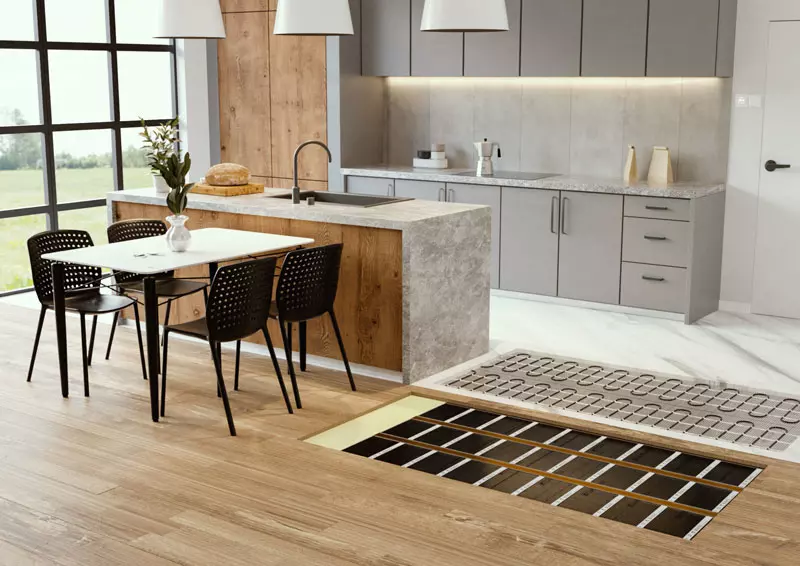
As for the costs of using underfloor heating, they can be reduced by using an insulating mat, which is why it is recommended to lay it - especially since it does not raise the floor level much. Its use prevents heat loss, providing thermal insulation.
How to minimize the costs of electric underfloor heating?
Underfloor heating is a very convenient solution that allows you to use an exposed, large surface as a heat source, leaving the walls free, without radiators making furniture difficult. A warm floor also means comfort for your feet and eliminates the need to use thick carpets and rugs. Electric underfloor heating is becoming more and more popular, especially in the era of widespread use of renewable energy sources. This is the basic way to reduce the cost of this form of home heating. The investment is made once - in photovoltaic panels used to produce energy and in electric underfloor heating. Depending on the size of the investment, its costs should be returned after a few or a dozen or so years. From now on, you can use electricity heating completely free of charge.
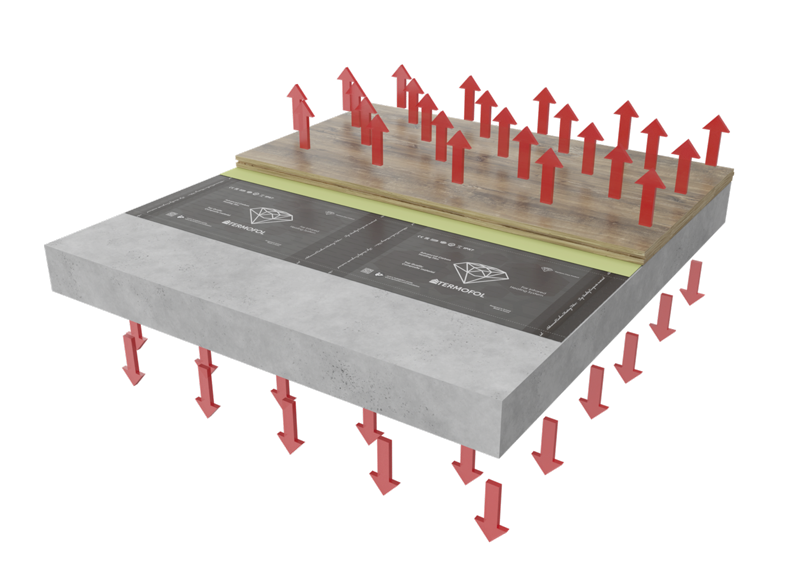
The second way to save will be to use storage underfloor heating in your home, which consumes electricity only when it is cheaper. It is also worth implementing healthy habits that support the proper use of media, such as less frequent but intensive ventilation in winter with the heating turned off (minimizing frequent heat loss), as well as avoiding temperature fluctuations, in which a thermostat can be useful. A constant, comfortable temperature for household members not only saves money, but above all has a positive effect on health, comfort and thermal comfort. When used properly, the costs of underfloor heating are comparable to other forms of home heating.
If you are wondering whether to choose underfloor heating for your new house or apartment, our advisors will be happy to suggest the best solutions! Contact us.
